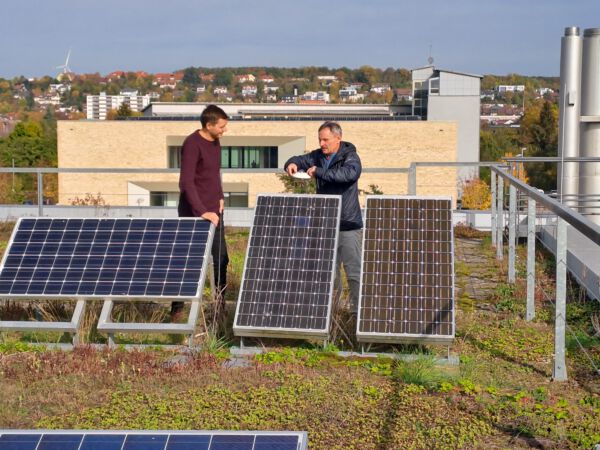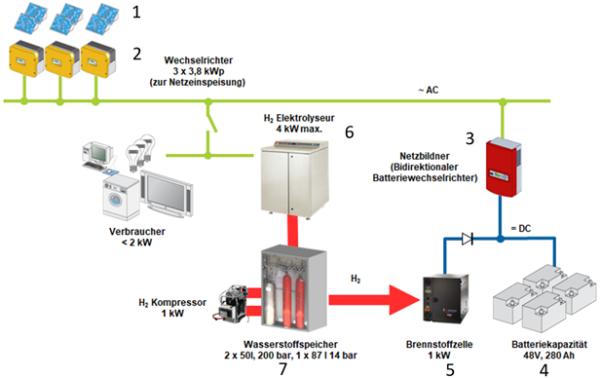Hydrogen island network at Hochschule Ansbach
Smoothing volatile power generation and delivering green power in a predictable way
The greatest challenge for the energy supply of the future lies in the storage of large quantities of sustainably generated electricity. Although the expansion of renewable energy sources is still far from supplying countries such as Germany in a carbon dioxide-neutral manner, plants are already shutting down due to temporary overproduction.
Hochschule Ansbach has implemented an innovative approach that temporarily stores photovoltaic electricity in the form of hydrogen. The system is designed as a self-sufficient stand-alone grid and can be coupled with the public power grid if required.
Description of the stand-alone grid system
The photovoltaic system at Hochschule Ansbach supplies laboratories with electricity, generates hydrogen and feeds into the public grid. The special feature of the CO2-neutral plant is the combined storage system, consisting of battery, fuel cell, electrolyser and hydrogen storage.
If the laboratories need more electricity than the photovoltaic system can supply, the battery storage system is first discharged and the stored hydrogen is simultaneously converted back into electricity using the fuel cell. If this is still not enough, additional electricity is drawn from the public grid.
If the photovoltaic system produces more electricity than is currently demanded in the laboratories, the battery storage system charges up and the electrolyzer produces hydrogen. If more electricity is available than consumers, battery storage and the electrolyzer can absorb, the surplus is fed into the public grid.
Battery storage is short-term storage with fast response times, whereas the H2 system (electrolyzer, H2 storage, fuel point) can store large amounts of electricity over long periods of time.
The vision being pursued with the demonstration plant is a system of many such self-sufficient plants that are nevertheless interconnected and can operate as a cluster when needed. If the energy sources of the individual cells differ (e.g. wind, solar, biogas), the systems can support each other in energy storage and supply.
The demonstration system will be used to study performance parameters, reliability, resilience, longevity and economics, in addition to consumption and yield profiles.
The full report is available in the Journal „GREEN EFFICIENT TECHNOLOGIES“ at https://lnkd.in/gXa-mvui


